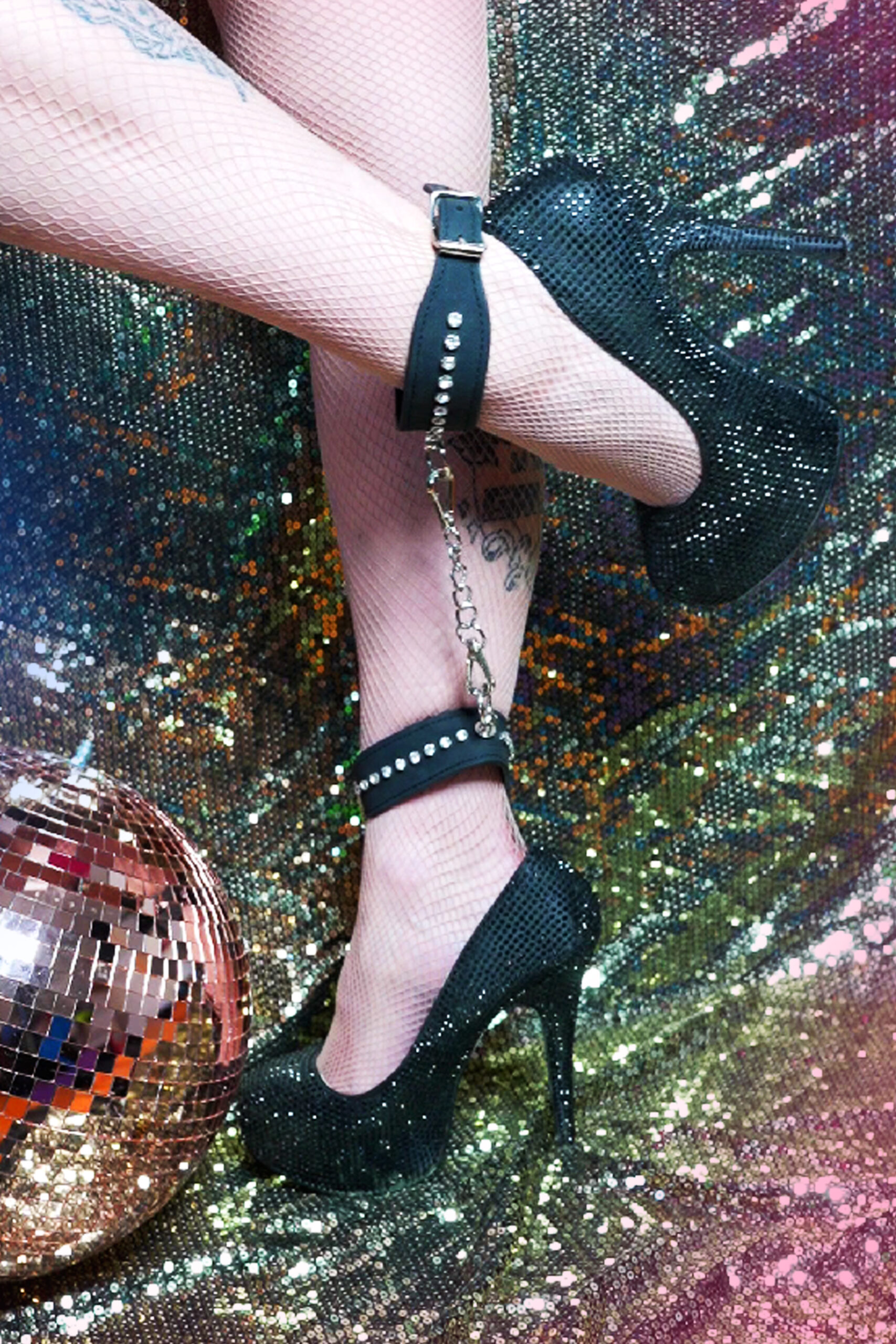How To Define And Embrace Your Own Sexuality In A Fluid World
Understanding Sexual Fluidity
In today’s evolving world, understanding sexual fluidity is becoming increasingly important. Sexuality is not always a fixed and unchanging concept; it can evolve and shift over time. Recognizing and accepting this fluidity allows individuals to embrace the complexities of their own desires and identities.
Defining Sexual Orientation
Sexual fluidity refers to the capacity for an individual’s sexual orientation or attractions to change over time.
This doesn’t imply a lack of commitment or genuine feelings; rather, it acknowledges that people’s preferences and desires can evolve as they grow and experience life. Understanding this fluidity is crucial for fostering a more inclusive and accepting environment where individuals feel comfortable exploring and expressing their sexuality without judgment.
Defining sexual orientation can be complex, as it encompasses a spectrum of attractions rather than a simple binary. Some individuals identify as heterosexual, attracted primarily to people of the opposite gender; others may identify as homosexual, primarily attracted to people of the same gender.
There are also identities like bisexual, pansexual, and asexual, each representing unique experiences and expressions of attraction.
It’s important to remember that these labels are not rigid or definitive, and individuals may find that their understanding of their own sexuality evolves over time.
Exploring the Spectrum of Sexuality
Embracing your own sexuality in a fluid world means acknowledging that your feelings and attractions can change. It’s about being open to exploring different aspects of yourself and not feeling confined by labels.
Start by paying attention to your desires and attractions without judgment.
Reflect on past experiences and how they may have shaped your understanding of sexuality.
Remember that there is no right or wrong way to experience sexuality. What matters most is that you feel comfortable and authentic in your own skin.
Don’t be afraid to ask questions, seek support from trusted friends or family members, or consult with a therapist or counselor if you need guidance.
The journey of self-discovery is unique for everyone.
Recognizing Fluid vs. Fixed Identities
In today’s evolving world, understanding sexual fluidity is becoming increasingly important. Sexuality is not always a fixed and unchanging concept; it can evolve and shift over time. Recognizing and accepting this fluidity allows individuals to embrace the complexities of their own desires and identities.

Sexual fluidity refers to the capacity for an individual’s sexual orientation or attractions to change over time.
This doesn’t imply a lack of commitment or genuine feelings; rather, it acknowledges that people’s preferences and desires can evolve as they grow and experience life. Understanding this fluidity is crucial for fostering a more inclusive and accepting environment where individuals feel comfortable exploring and expressing their sexuality without judgment.
Defining sexual orientation can be complex, as it encompasses a spectrum of attractions rather than a simple binary. Some individuals identify as heterosexual, attracted primarily to people of the opposite gender; others may identify as homosexual, primarily attracted to people of the same gender.
There are also identities like bisexual, pansexual, and asexual, each representing unique experiences and expressions of attraction.
It’s important to remember that these labels are not rigid or definitive, and individuals may find that their understanding of their own sexuality evolves over time.
Embracing your own sexuality in a fluid world means acknowledging that your feelings and attractions can change. It’s about being open to exploring different aspects of yourself and not feeling confined by labels.
Start by paying attention to your desires and attractions without judgment.
Reflect on past experiences and how they may have shaped your understanding of sexuality.
Remember that there is no right or wrong way to experience sexuality. What matters most is that you feel comfortable and authentic in your own skin.
Don’t be afraid to ask questions, seek support from trusted friends or family members, or consult with a therapist or counselor if you need guidance.
The journey of self-discovery is unique for everyone.
Embracing Your Evolving Identity
Defining and embracing your sexuality in today’s world can be a journey of self-discovery. Sexuality is not always static; it can evolve and change as individuals grow and experience life. Recognizing this fluidity allows us to explore our desires and attractions without feeling confined by rigid labels. It’s about understanding that there is no one “right” way to be, and embracing the complexities and nuances of our own experiences.
Self-Reflection and Exploration
Defining and embracing your sexuality in today’s world can be a journey of self-discovery. Sexuality is not always static; it can evolve and change as individuals grow and experience life. Recognizing this fluidity allows us to explore our desires and attractions without feeling confined by rigid labels. It’s about understanding that there is no one “right” way to be, and embracing the complexities and nuances of our own experiences.
This process begins with self-reflection.
- Pay attention to your feelings and attractions without judgment.
- Reflect on past experiences and how they may have shaped your understanding of sexuality.
- Remember that there is no right or wrong way to experience sexuality. What matters most is that you feel comfortable and authentic in your own skin.
Don’t be afraid to ask questions, seek support from trusted friends or family members, or consult with a therapist or counselor if you need guidance. The journey of self-discovery is unique for everyone.
Honoring Your Feelings and Experiences

Defining and embracing your sexuality in today’s world can be a journey of self-discovery. Sexuality is not always static; it can evolve and change as individuals grow and experience life. Recognizing this fluidity allows us to explore our desires and attractions without feeling confined by rigid labels. It’s about understanding that there is no one “right” way to be, and embracing the complexities and nuances of our own experiences.
This process begins with self-reflection.
- Pay attention to your feelings and attractions without judgment.
- Reflect on past experiences and how they may have shaped your understanding of sexuality.
- Remember that there is no right or wrong way to experience sexuality. What matters most is that you feel comfortable and authentic in your own skin.
Don’t be afraid to ask questions, seek support from trusted friends or family members, or consult with a therapist or counselor if you need guidance. The journey of self-discovery is unique for everyone.
Communicating with Others Openly and Honestly
Defining and embracing your sexuality in today’s world can be a journey of self-discovery. Sexuality is not always static; it can evolve and change as individuals grow and experience life. Recognizing this fluidity allows us to explore our desires and attractions without feeling confined by rigid labels. It’s about understanding that there is no one “right” way to be, and embracing the complexities and nuances of our own experiences.
This process begins with self-reflection.
- Pay attention to your feelings and attractions without judgment.
- Reflect on past experiences and how they may have shaped your understanding of sexuality.
- Remember that there is no right or wrong way to experience sexuality. What matters most is that you feel comfortable and authentic in your own skin.
Don’t be afraid to ask questions, seek support from trusted friends or family members, or consult with a therapist or counselor if you need guidance. The journey of self-discovery is unique for everyone.
Communicating openly and honestly about sexuality can foster deeper connections and understanding in relationships. Start by creating a safe and comfortable space where your partner feels able to express themselves freely without fear of judgment.
Active listening is crucial. Pay attention to what your partner is saying, both verbally and nonverbally, and strive to understand their perspective. Avoid interrupting or offering unsolicited advice, instead focus on validating their feelings and experiences.
Be willing to share your own thoughts and feelings about sexuality in a respectful and open manner. This can help build trust and intimacy in the relationship. It’s important to remember that communication is an ongoing process, and it may take time and effort to navigate these conversations effectively.
Navigating Societal Expectations
In today’s evolving world, understanding sexual fluidity is becoming increasingly important. Sexuality is not always a fixed and unchanging concept; it can evolve and shift over time. Recognizing and accepting this fluidity allows individuals to embrace the complexities of their own desires and identities.
Defining and embracing your own sexuality in a fluid world means acknowledging that your feelings and attractions can change. It’s about being open to exploring different aspects of yourself and not feeling confined by labels.
This process begins with self-reflection. Pay attention to your desires and attractions without judgment. Reflect on past experiences and how they may have shaped your understanding of sexuality. Remember that there is no right or wrong way to experience sexuality. What matters most is that you feel comfortable and authentic in your own skin.
Don’t be afraid to ask questions, seek support from trusted friends or family members, or consult with a therapist or counselor if you need guidance.
The journey of self-discovery is unique for everyone.
Challenging Stereotypes and Biases
Navigating societal expectations and challenging stereotypes and biases is an ongoing process that requires both individual effort and collective action.
Firstly, it’s crucial to understand the origins and impact of these societal norms. Stereotypes are often based on prejudice and misinformation, leading to harmful generalizations about individuals or groups. Recognizing how these biases manifest in our own thoughts and actions is a vital first step towards dismantling them.
Next, promoting open and honest conversations about diversity and inclusion is essential. This involves actively listening to different perspectives, challenging discriminatory language, and educating ourselves about the experiences of marginalized communities.
Furthermore, supporting organizations and initiatives that advocate for equality and justice can contribute to systemic change. By amplifying the voices of those who are often silenced and working towards a more equitable society, we can create a world where individuals are valued for their unique qualities rather than judged based on stereotypes. Finally, remembering that progress is a continuous journey requires patience, persistence, and a willingness to learn and grow.
Finding Support and Community
Defining and embracing your sexuality in today’s world can be a journey of self-discovery. Sexuality is not always static; it can evolve and change as individuals grow and experience life. Recognizing this fluidity allows us to explore our desires and attractions without feeling confined by rigid labels. It’s about understanding that there is no one “right” way to be, and embracing the complexities and nuances of our own experiences.
This process begins with self-reflection.
- Pay attention to your feelings and attractions without judgment.
- Reflect on past experiences and how they may have shaped your understanding of sexuality.
- Remember that there is no right or wrong way to experience sexuality. What matters most is that you feel comfortable and authentic in your own skin.
Don’t be afraid to ask questions, seek support from trusted friends or family members, or consult with a therapist or counselor if you need guidance. The journey of self-discovery is unique for everyone.
Navigating societal expectations and challenging stereotypes and biases is an ongoing process that requires both individual effort and collective action.
Firstly, it’s crucial to understand the origins and impact of these societal norms. Stereotypes are often based on prejudice and misinformation, leading to harmful generalizations about individuals or groups. Recognizing how these biases manifest in our own thoughts and actions is a vital first step towards dismantling them.
Next, promoting open and honest conversations about diversity and inclusion is essential. This involves actively listening to different perspectives, challenging discriminatory language, and educating ourselves about the experiences of marginalized communities.
Furthermore, supporting organizations and initiatives that advocate for equality and justice can contribute to systemic change. By amplifying the voices of those who are often silenced and working towards a more equitable society, we can create a world where individuals are valued for their unique qualities rather than judged based on stereotypes. Finally, remembering that progress is a continuous journey requires patience, persistence, and a willingness to learn and grow.
Finding support and community can be invaluable when navigating the complexities of sexuality, societal expectations, and personal growth.
Firstly, connecting with individuals who share similar experiences or identities can create a sense of belonging and understanding. This could involve joining LGBTQ+ organizations, attending support groups, or finding online communities where people feel safe to express themselves openly. Sharing stories, offering advice, and providing emotional support can help individuals feel less alone in their journeys.
Additionally, seeking guidance from trusted mentors, therapists, or counselors can provide valuable insight and support. These professionals can offer a safe space for exploring feelings, processing challenges, and developing coping strategies. They can also help individuals navigate complex situations, advocate for their needs, and build resilience. Remember that building a supportive network takes time and effort, but the rewards of having people who understand and accept you unconditionally are invaluable.
Creating a Supportive Environment
Defining your sexuality in today’s world is a personal journey marked by self-discovery and understanding.
First, remember there’s no single “right” way to define yourself. Sexuality is fluid and can evolve over time. Don’t feel pressured to fit into rigid labels or societal expectations. It’s about what feels authentic and genuine for you.
Start by honestly reflecting on your feelings, attractions, and experiences without judgment. Pay attention to who you are drawn to, what makes you feel comfortable and fulfilled, and how these feelings have changed over time. Exploring resources like books, articles, or online communities can provide valuable information about different sexual orientations and identities, helping you better understand yourself in relation to these concepts.
Most importantly, be kind to yourself. This is a journey of exploration, not a race. Embrace the complexities and nuances of your own experience, and remember that your sexuality is a part of what makes you unique.
Creating a supportive environment where individuals feel comfortable expressing their sexuality starts with fostering open communication and empathy.
First, it’s essential to create a space free from judgment and shame. Encourage honest conversations about sexuality without fear of ridicule or criticism. Active listening is crucial – truly hear what others are saying, validate their experiences, and avoid interrupting or offering unsolicited advice.
Next, challenge stereotypes and misconceptions. Educate yourself about diverse sexual orientations and gender identities, and speak out against harmful language or prejudice. Remember that everyone deserves to be treated with respect and dignity, regardless of their sexual orientation or identity. Promoting inclusivity means celebrating diversity and creating a welcoming atmosphere where individuals feel safe to be themselves authentically.
Finally, remember that change takes time. Be patient and persistent in your efforts to create a more inclusive environment. By fostering understanding, challenging biases, and celebrating individuality, we can build a society where everyone feels accepted and valued for who they truly are.
aphrodite sex
Audrey SJL
A1 Nail Art
- Why Does Lip Filler Migrate Above Lip - November 7, 2025
- What Is The Best THC Liquid? - November 4, 2025
- What Are The Best CBD Gummies For Relaxation And Stress Relief? - November 2, 2025

